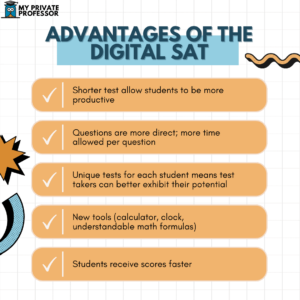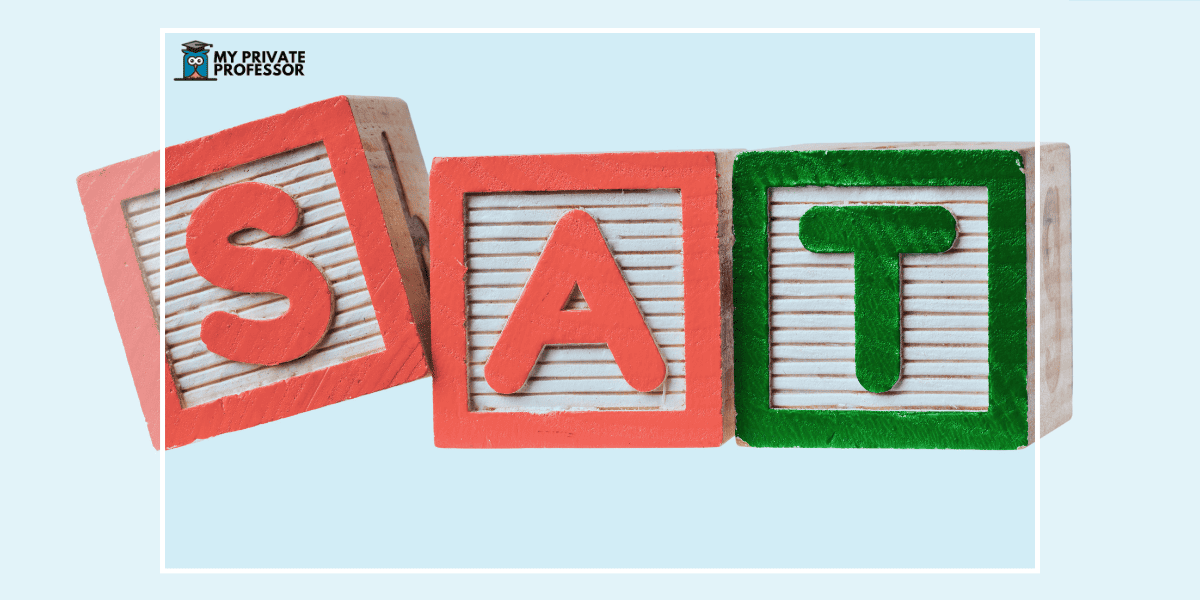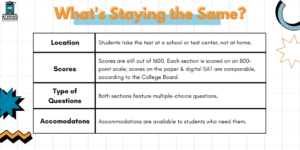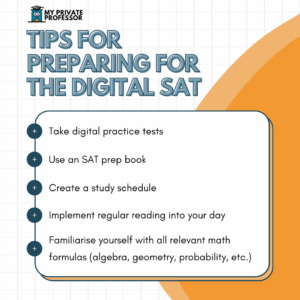Since the dawn of time (well, since 1926), students have been preparing for the SAT, which, according to The Princeton Review, aims “to measure a high school student’s readiness for college, and provide colleges with one common data point that can be used to compare all applicants.”
Ever since Princeton professor Carl Campbell developed those first SATs, the exams have continually undergone modifications.
And, once again, The College Board has developed a new version of the exam.
So if you’ve grappled with whether you should take the ACT vs. SAT, and have finally decided that the SAT’s the one, here’s what you need to know about the new, digital version.
Considering the various modifications, familiarizing yourself with the new SAT will not only help you better prepare, but will also help you better manage any test anxiety you may be feeling.
When is the SAT changing?
Officially, for all students, the SAT will transition to the new, fully digital version in January 2024. But for international students, this change has already happened. Any international student who registers to take the SAT in 2023 will be taking the new version.
Changes to expect
Exam administration
One of the most significant changes on the SAT is that the test will be fully digital, whereas students took the previous exam on paper. Students will take the new version on a digital device (a laptop or tablet), through an application called Bluebook.
Exam length
This one may be particularly exciting for students. While the old SAT took three hours, the digital version will take students two hours and fourteen minutes to complete.
Format
The digital SAT also has some format changes.
This new version will contain two sections: Reading and Writing, and Math. Meanwhile, the pencil and paper version had three sections: Reading, Writing and Language, and Math.
On the previous version of the SAT, students could go back and forth between sections. But on the digital version, the sections are now called modules (Module one and Module two), and students must sequentially complete them (and cannot skip between sections).
Content
On the digital SAT, reading passages will be shorter, and each of these passages will have only one question. Contrastingly, the pencil and paper version included long and short reading passages, which corresponded with multiple questions.
Notably, the new version of the SAT will be adaptive, meaning that no two students will be taking the same exam.
At the beginning of the exam, students will complete an “introductory module.” The student’s performance on that section will determine the difficulty level of the questions on the following sections.
Tools/rules
Through the testing application, students will have access to various tools including a digital countdown clock, a flagging tool to mark questions for review, a graphic calculator, and a reference sheet.
On this new SAT, students will be allowed to use their graphic calculator on the entire math section.
In the previous version, a proctor timed the exam, and students could only use a graphic calculator on certain parts of the math section. Meanwhile, reference sheets were included in the previous exam’s booklet. 
Scoring
While students previously had to wait a couple of weeks to get their scores after taking the SAT, the new version enables students to get their score reports within a few days of their test.
Another change is that, along with their official score report, students will receive personalized college and career guidance. Additionally, the score report will include resources that students can use to connect with colleges and workforce training programs. Plus, they’ll receive information to help them understand how their exam performance may connect to certain careers.
SAT prep
The Bluebook app will offer students full-length, digital practice SATs to take before their exam date. On the old version, students could download and print paper and pencil practice exams.
Why is the SAT changing?
As noted, the new exam will be shorter, containing shorter reading passages and more direct questions. Plus, students will have more tools at their disposal that they can use to their advantage (digital countdown clock, a question flagging tool, and a graphic calculator which they can use on the entire Math section).
The College Board implemented these changes simply in an effort to make the exam more accessible for students.
In addition, the College Board aimed to make the new version of the SAT more relevant. Switching to a digital exam is more in line with today’s students’ learning experiences, and will better prepare students for the future.
Finally, the new SAT—particularly, the supplemental information students will receive with their score reports—should help students better prepare for the next stage of their journey.
What is the purpose of adaptive testing?
Tailoring exams to the specific skills and abilities of each student, will likely offer a smoother test-taking experience.
Consequently, students will probably spend less time struggling with difficult questions, which inevitably takes time away from other questions.
In addition, test security will be more secure, since no two students will be taking the same exam.
Is the new SAT easier or harder than the old SAT?
Since this is new, it’s difficult to say. But one thing’s for sure—the test is designed to make for an “easier” test-taking experience. That is, the test is shorter, the questions are more direct, and students have more tools.
Final thoughts
Evidently, The College Board, in modifying the test, is trying to create a more student-friendly and accessible exam. And we are in full support of this objective! Students: you now have the excellent opportunity to exercise your agency. With more flexibility (the option to take a digital or paper test), the ball is in your court.










